THE BASICS OF EPIC CONSTRUCTED
One of the strangest and best things about Epic as a card game is that people usually start with Limited. Pack Draft, Dark Draft, and Limited 60 are all good starting points.
However, Epic Constructed takes the game to another level. Having three copies of something feels (at first) very strange, and having to choose the best cards in a game where almost everything feels overpowered can be a little intimidating. We’re here to help. This article will contain some basic advice on how to approach Epic Constructed.
DECK CONSTRUCTION RULES
First of all, let’s take a quick look at the rules for Epic Constructed.
-Your deck must be 60 cards minimum.
You can go over 60 cards if you wish, but you generally don’t since having more than 60 dilutes your deck, and therefore your strategy. Keep it nice and tight.
–For every (0) cost card in your deck, you have to have two cards of that Alignment that cost (1)
This sounds more complex than it is. If you want to have a single copy of Amnesia, just make sure you put in two Sage cards that cost (1), i.e. they have (1) in the top right corner. You will always want to have some (0) cost cards in order to keep up the pressure.
–No more than three copies of any one card by English-language title.
Yes we have foreign Epic, and no, you can’t use it to gain an advantage by having 12 Flame Strikes!
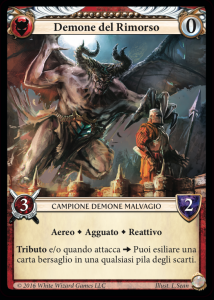
Or 12 of whatever this is!
CHOOSE A THEME
One of the words that you’ll hear a lot when talking or reading about deck construction is Synergy. The basic idea of deck synergy is: Does every card in my deck work with other cards in my deck? One example of basic synergy is Hurricane. Hurricane deals 9 damage to each Champion. In order to maximize the effects of Hurricane, you would want to have as many Champions in your deck as possible that have 10 or more Defense.
The first thing to ask yourself when choosing a theme is: How does my deck win? It’s best to pick your basic strategy and build around that. Do you want big dinosaurs and fire to clear out pesky blockers? Great! Would you rather empty your opponent’s hand and then put out hard-to-remove threats? Sounds good! The important thing is that you choose a theme and stick with it. It’s also important to choose a theme that matches your play style. If you don’t like control-style decks, you won’t do as well if you build one.
Most constructed decks keep to two alignments with a possible splash for a third. What’s a splash? That’s when a deck contains a few cards of an alignment. For example, a Good/Evil deck might have two Ancient Chant and one Amnesia for a little extra card-drawing and some insurance against the opponent using discard pile recursion.
THREATS AND REMOVAL
Most of your cards will fall into one of these two categories, with the rest generally being dedicated to card drawing and recycling. Threats are obvious. You put down a giant stabby-tooth monster, and now your opponent must expend resources to deal with it. Threats that replace themselves (such as Knight of Shadows or Triceratops) or remove an opponent’s threat (such as Kong or Medusa) are usually better. Also consider threats that are themselves hard to remove, such as Steel Golem or The People’s Champion.
Removal is usually more nuanced, and often fits the theme of the deck. Many Wild events set things on fire, many Evil events break or severely damage Champions. Good tends to banish Champions, and Sage will mess with them by either returning them to their owner’s hand, or outright stealing them.
With removal, you’ll probably want a few cards that target individual champions, and a few other cards that remove multiple threats (often called “board sweepers”). Since many board-sweepers also have a “draw 2 cards” option, it’s a good idea to include a few if you can.
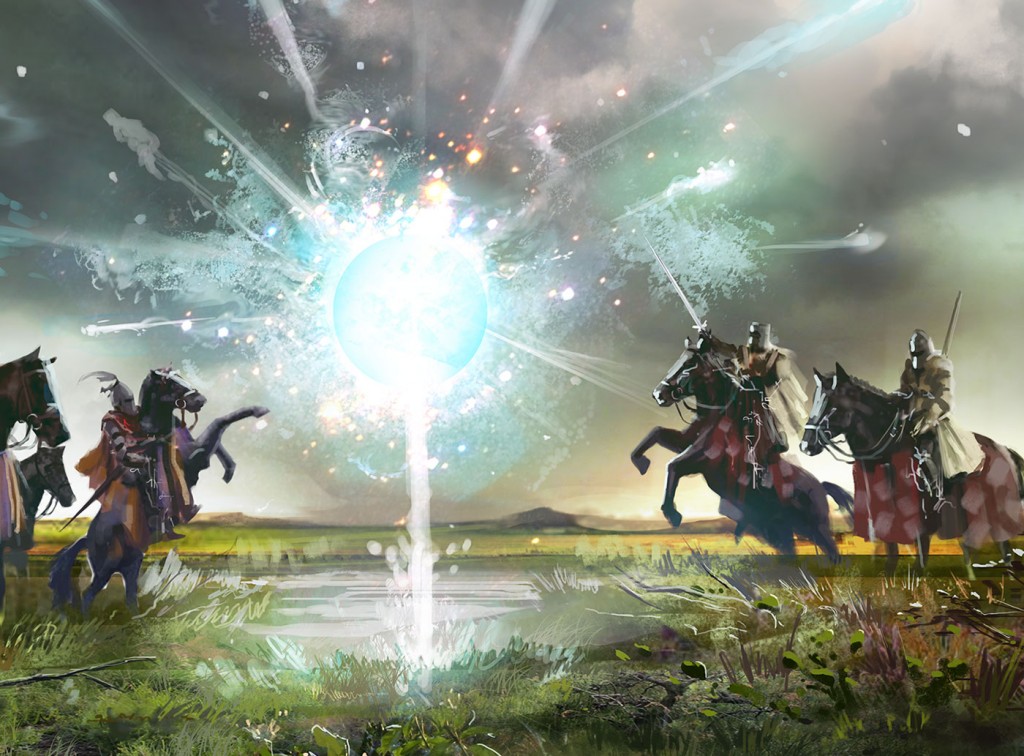
Ok everybody, back to 1!
WHAT IS EVERYBODY ELSE PLAYING?
Here’s another word that often comes up when building a constructed deck: Metagame. The Metagame (literally the game outside the game) usually refers to the decks or cards that other people might be playing competitively. Popular decks don’t remain popular for long, since players will often build new decks that combat popular decks very well. This causes a lot of shift and flow in the kinds of decks you see in tournaments. Often, players will try to predict this shift when building their decks for a tournament.
For example, if you expect a lot of people playing discard cards (such as Thought Plucker or Psionic Assault) you might consider putting Markus, Watch Captain in your deck, or even bulk up on cards that have a “Draw 2 cards” effect to mitigate the card loss.

If I could trouble you fellows for some advice?
A FEW RANDOM PIECES OF ADVICE
Try and make sure you have a good number of cards that you can play on your opponent’s turn (Ambush Champions or Events). You ideally should never have gold left over during your opponent’s turn, especially in the first few turns of the game. Once you build your deck, play out the first few turns as a test game (commonly called “goldfishing” i.e. playing against your goldfish). See how your deck flows. Imagine threats and how you might counter them. If you find yourself drawing too many removal cards and not enough threats, you can make that adjustment before seeing a real-life opponent.
Once you finish a match, even at a competitive tournament, your opponent will often be willing to give you advice on ways you could have made a better play decision, or even advice on how to make your deck stronger. Seek out advice where you can, but remember that the end decision is ultimately yours.
Speaking of advice, tune in to Part 2 of this article, where we ask the experts their thoughts on Epic Constructed!
If you enjoyed this article, please let us know at [email protected] and we’ll try and bring you more content like this.
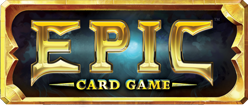
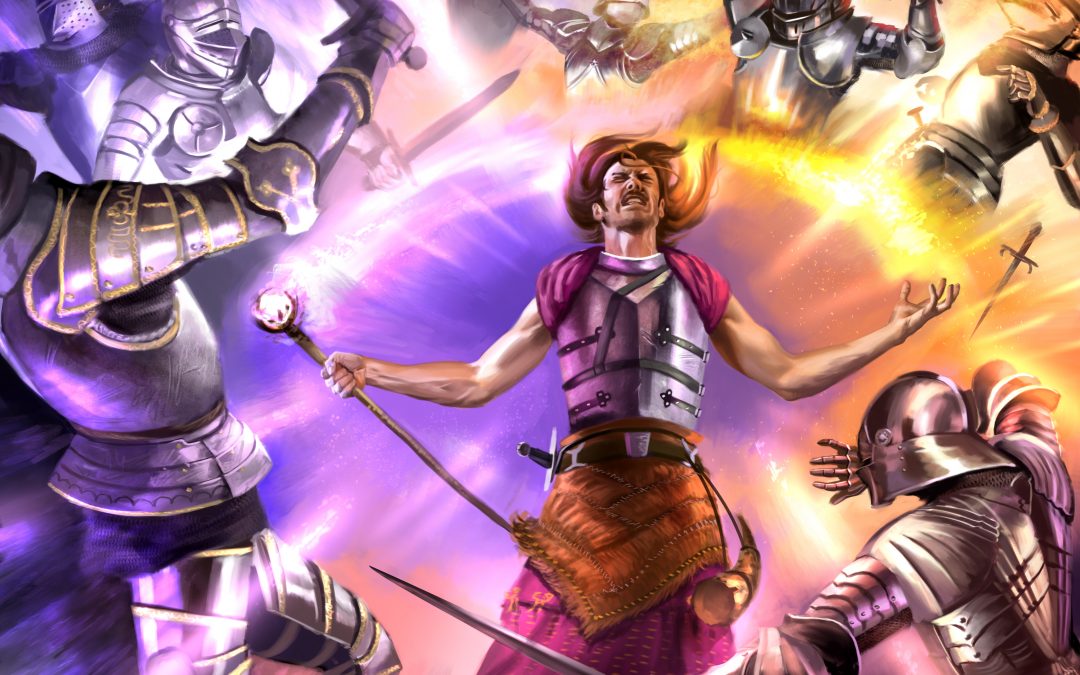
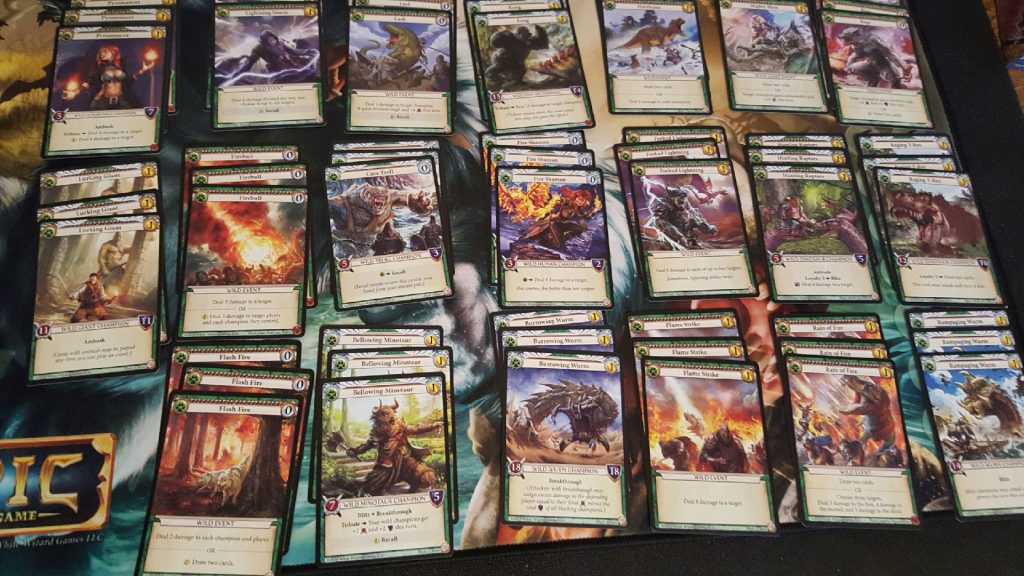
Recent Comments